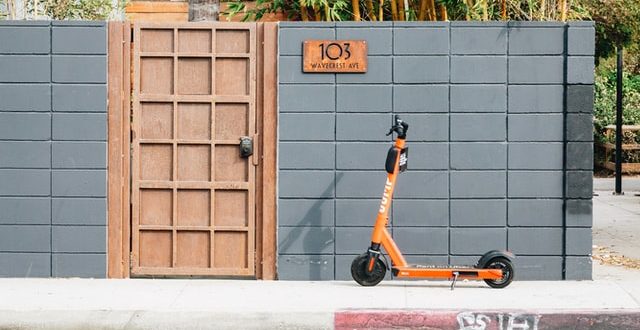As eco-consciousness rises globally, individuals examine the environmental effects of their daily actions. Ecologists identify carbon emissions as the leading climate change culprit. In response, companies develop new technology, decreasing atmospheric pollution and increasing the carbon neutrality of future society.
The sustainability of the world’s nations depends on establishing greenhouse gas reduction goals, developing a renewable electric grid, and shifting our energy reliance away from fossil fuels towards renewable power.
Transitioning the transportation industry towards clean energy can significantly decrease national carbon emissions. One important component is the electric scooter.
What Are E-Scooters?
E-scooters are a sustainable alternative to urban vehicle transportation. These personal conveyances contain a battery pack that can travel up to 37 miles on a single charge. Cities everywhere may soon have e-scooters available to hire at a moment’s notice, where anyone may access the scooters through a mobile device app.
The scooters wirelessly consume a rider’s information through the app, charging them per mile. Unlike conventional transportation methods, they generate zero tailpipe emissions. They offer an effective greenhouse gas reduction technique when in use.
Unfortunately, current charging methods limit the sustainability of the scooters. The devices reside in designated pickup and dropoff locations throughout cities, where they wait for riders. Pickup locations appear near bike racks, bus stops, train stations, and more, increasing the accessibility of electric transportation for all.
Right now, these locations lack charging ports, generating challenges for companies’ eco-friendly business models. Bird, Lime, and other scooter companies currently hire individuals to track down depleted devices and charge them. The employees load the vehicles into their own cars and transport them to their homes for charging.
When evaluating the sustainability of an e-scooter, one must examine all related emissions, including these “search-and-rescue” missions. Moreover, conducting a life cycle assessment of a device can unveil its true carbon footprint.
The Carbon Footprint
In America, the transportation sector generates 29% of all greenhouse gas emissions. Scooters can decrease the number of cars on the road, especially in cities with poor public transportation like Los Angeles. Limiting fossil fuel-driven cars can significantly reduce emissions over time.
The app-shared scooters also decrease production pollution. If a few individuals can share a vehicle rather than purchasing their own, there are fewer manufacturing demands. Companies can further reduce emissions by developing scooters in solar- or wind-powered production facilities.
Charging methods can significantly alter the size of a scooter’s carbon footprint. If the vehicles collecting the scooters for charging run on fossil fuels, it compromises the sustainability of the whole business model. On the other hand, gathering them with electric cars can decrease the associated emissions.
Similarly, if individuals charge their devices using coal- or natural gas-derived electricity, their emissions rise. Current scooter companies lack regulations on the collection and charging methods, degrading their sustainability.
Another significant factor contributing to a scooter’s carbon footprint is the battery. They contain lithium-ion batteries similar to electric vehicles. Mining and extracting lithium is water-intensive and ecologically degrading.
Miners waste 500,000 gallons of natural water accessing 1 ton of lithium. The process depletes freshwater sources, limiting farmers’ abilities to meet food production needs. Professionals also utilize chemicals in the extraction phase, leaving regional water supplies polluted.
Fortunately, there are sustainable production and maintenance alternatives that increase the eco-consciousness of the scooter sector. When adequately managed, companies can develop the most sustainable urban transportation conveyances.
Renewable Charging Methods
Recent technological advancements significantly decreased the cost and increased the efficiency of solar power. The sun’s energy is the most readily available electricity resource to date. Researchers evaluated the importance of sustainable power production and generated solar charging ports for e-scooters, shrinking their carbon footprint.
Environmental engineers developed a solar-powered alternative rather than relying on fossil fuel-driven vehicles and electricity for scooter maintenance. One tech company, Motosola, created a photovoltaic canopy that extends above bikes and scooters. It shields riders from the sun while generating enough energy to charge the device independently.
The technology could significantly reduce a device’s greenhouse gas emissions, eliminating vehicle pickup and dropoff. Rather than hoping both the transportation and charging of a scooter come from renewable energy, you can ensure its efficiency with the canopy.
Decreasing Congestion
With sustainable scooters, cities can decrease the ecological degradation associated with transportation. Utilizing shared conveyances can reduce vehicle congestion on the roads. Additionally, freeing up street space significantly increases driver safety.
It also improves the local urban air quality. Without consistent emissions, ground-level smog and heat can dissipate and reduce the heat island effect. Better air quality decreases adverse health effects like asthma and heat strokes.
Future Regulations
When e-scooters first appeared in urban regions, inadequate regulations limited their efficiency. Over the years, government officials evaluated the benefits and challenges of their uses, setting essential guidelines. We can expect renewable charging requirements in the future, further increasing the sustainability of the transportation sector within metropolitan areas.


